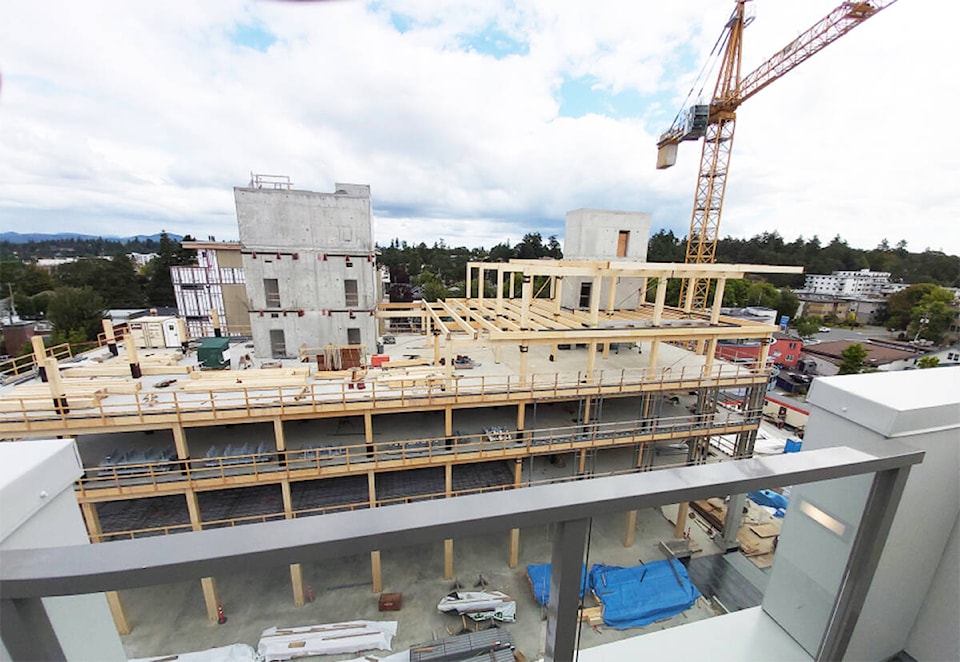Aligning itself with neighbouring municipalities, Esquimalt is looking at requiring new construction to not emit carbon pollution ahead of the province’s timeline.
Council on Sept. 26 voted to direct the township to craft a bylaw that will likely require all new residential and commercial buildings to not produce any greenhouse gases as of mid-2025.
B.C. is poised to add a new carbon pollution standard to the province’s building code by the end of 2022 that will require all new buildings in the province to be zero carbon by 2030. Victoria has already implemented an accelerated timeline, which mandates all new builds to be emission-free as of 2025.
Municipalities to this point have had the choice to buy into the provincial Step Code – an optional guideline that can be used to mandate energy efficiency in new construction that goes above and beyond the building code.
Esquimalt’s hope is that Greater Victoria’s municipalities will rally around the more ambitious timeline in order to create consistency for builders across the region.
If the township’s bylaw follows a phased approach that was presented to council on Sept. 26, builders will be subject to increased standards in each of the next three years. It would require residential buildings between four and six storeys to be 50 per cent more energy efficient than the current building code standard and be low-carbon by mid-2024.
For reference, Esquimalt says the low-carbon classification means the buildings would use electric heating and water heating.
Taller housing (over six storeys) and commercial buildings would have to be 20 per cent more efficient and low carbon by July 2024 under the proposed timeline.
Newly built homes, with a maximum of three storeys and up to four units, in B.C. already need to be 50 per cent more efficient than the building code standard by 2023. They would also need to be low carbon as of July 2024 based on the Esquimalt proposal.
Saanich in August adopted its own expedited schedule which will see smaller residential and other buildings have to be zero carbon ready in 2025. Central Saanich has also set the mid-decade requirement.
A report encompassing Victoria, Saanich, Central Saanich and major building groups from the region found there’s agreement on the need for reducing emissions, decarbonizing is technically possible for developers and – unlike controlling emissions – the step code requirements don’t fundamentally change how homes are built. That engagement also found local developers would like the region to standardize its approach.
Buildings are a prominent polluter in the Capital Region, coming in just behind transportation as the top greenhouse gas source.
READ: Victoria mandates zero carbon new buildings by 2025, ahead of B.C. timeline
jake.romphf@blackpress.ca. Follow us on Instagram. Like us on Facebook and follow us on Twitter.



